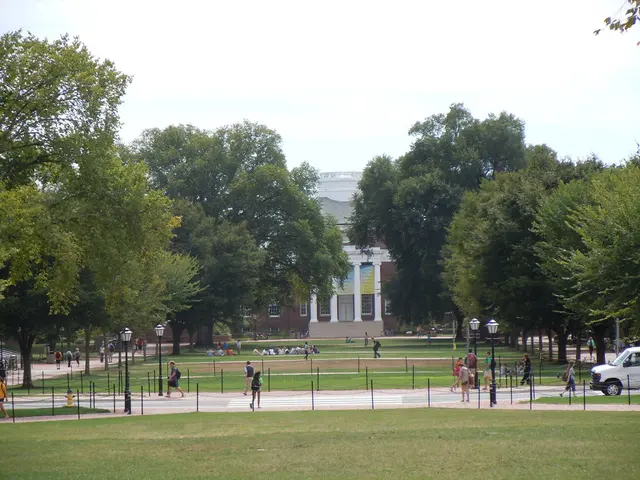Jobless Numbers Decoded (Root Causes, Consequences, Potential Remedies)
The natural rate of unemployment is a crucial concept in understanding the health of a economy. This steady-state level of unemployment, typically estimated around 4.5% to 5% in the U.S. economy, is composed of frictional and structural unemployment that persist even during periods of "full employment."
Frictional unemployment arises from people voluntarily moving between jobs or entering the labor market for the first time. On the other hand, structural unemployment occurs when workers' skills do not match employers' needs, often due to technological changes or shifts in the economy.
The natural rate of unemployment impacts the economy in several ways. It sets a baseline level of unemployment below which inflation tends to accelerate, influencing central banks and policymakers in setting interest rates and fiscal policies. Attempting to reduce unemployment below this natural rate via expansionary monetary or fiscal policy only temporarily lowers unemployment but risks higher inflation in the long run.
Prolonged economic downturns can increase the natural rate by causing long-term unemployment and skill erosion, as happened after the 2008 financial crisis. The natural rate of unemployment also affects economic performance because some unemployment is necessary for labor market flexibility and economic dynamism, but long-term or excessive natural unemployment can harm growth and productivity.
Unemployment, whether short-term or long-term, has far-reaching consequences. It can lead to skills becoming outdated, making it harder to re-enter the workforce and secure a new job that matches qualifications. With fewer people employed and paying taxes, government revenue shrinks, limiting the government's ability to invest in public services like infrastructure and education.
Unemployment often disproportionately affects disadvantaged groups, such as recent graduates or single parents, widening the income gap between the wealthy and the poor. The stress of unemployment can lead to mental and physical health problems, including anxiety, depression, and increased risk of heart disease, stroke, and suicide.
Unemployment leads to social unrest, increased crime rates, and social unrest as people struggle to make ends meet. Hidden unemployment and underemployment highlight inefficiencies in the labor market, underestimating the true extent of underutilized talent and skills and suggesting the economy isn't fully utilizing its available labor force.
Reduced demand can force businesses to cut costs, reduce hours, or lay off additional workers, creating a vicious cycle of declining demand and economic slowdown. Fewer employed people means less disposable income circulating in the economy, leading to decreased demand for goods and services and potentially hurting businesses.
Unemployment strains social programs like unemployment benefits and welfare, limiting resources available for other essential services. Unemployment can lead to deflation or inflation, discouraging businesses from investing and hiring or eroding consumer purchasing power.
Underemployment can impact worker morale and productivity and limit economic growth by having people with valuable skills not contributing to their full potential. A high number of discouraged workers can indicate a mismatch between skills and job opportunities or inadequate support systems for re-entry into the workforce.
Job insecurity can cause employee morale to suffer, leading to lower productivity, higher absenteeism, and increased turnover. Job loss can cause financial strain, making it difficult to afford basic necessities and put savings goals on hold.
A smaller employed workforce means the economy produces less overall, impacting Gross Domestic Product (GDP), the total value of goods and services produced in a country. Governments implement various policies to steer the economy towards full employment while maintaining price stability, including stimulating demand, improving job skills, and promoting labor market flexibility.
In summary, the natural rate of unemployment represents the "normal" unemployment level around which the economy tends to stabilize, guiding policymakers' decisions and shaping expectations about unemployment and inflation trade-offs. It's essential to consider the impacts of unemployment on individuals, society, businesses, and the entire economy when crafting policies to promote full employment and economic growth.
Here are two sentences that contain the given words:
- Pursuing education and self-development can help workers improve their skills to better match employers' needs, reducing structural unemployment in the business sector.
- Investing in education and public services such as infrastructure can help increase employment opportunities and stimulate the economy, contributing to reduced unemployment and financial stability.




